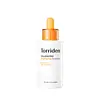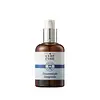What's inside
What's inside
 Key Ingredients
Key Ingredients

 Benefits
Benefits

 Concerns
Concerns

 Ingredients Side-by-side
Ingredients Side-by-side

Water
Skin ConditioningPropanediol
SolventGlycerin
HumectantNiacinamide
Smoothing3-O-Ethyl Ascorbic Acid
Skin Conditioning1,2-Hexanediol
Skin ConditioningIsopropyl Myristate
EmollientBetaine
HumectantErythritol
HumectantAdenosine
Skin ConditioningAllantoin
Skin ConditioningTocopherol
AntioxidantPanthenol
Skin ConditioningAscorbic Acid
AntioxidantSodium Ascorbyl Phosphate
AntioxidantAscorbyl Glucoside
AntioxidantAscorbyl Palmitate
AntioxidantEthylhexylglycerin
Skin ConditioningCaprylyl Glycol
EmollientXanthan Gum
EmulsifyingCorallina Officinalis Extract
Skin ConditioningEcklonia Cava Extract
Skin ConditioningCodium Tomentosum Extract
Skin ProtectingGelidium Cartilagineum Extract
Skin ProtectingHizikia Fusiforme Extract
Skin ConditioningOctyldodecanol
EmollientAcrylates/C10-30 Alkyl Acrylate Crosspolymer
Emulsion StabilisingTromethamine
BufferingDisodium EDTA
Methylpropanediol
SolventFerulic Acid
AntimicrobialOcimum Sanctum Leaf Extract
Skin ConditioningButylene Glycol
HumectantHydrogenated Lecithin
EmulsifyingCitrus Aurantium Bergamia Fruit Oil
MaskingMelia Azadirachta Leaf Extract
Skin ConditioningMelia Azadirachta Flower Extract
Skin ConditioningCurcuma Longa Root Extract
MaskingWater, Propanediol, Glycerin, Niacinamide, 3-O-Ethyl Ascorbic Acid, 1,2-Hexanediol, Isopropyl Myristate, Betaine, Erythritol, Adenosine, Allantoin, Tocopherol, Panthenol, Ascorbic Acid, Sodium Ascorbyl Phosphate, Ascorbyl Glucoside, Ascorbyl Palmitate, Ethylhexylglycerin, Caprylyl Glycol, Xanthan Gum, Corallina Officinalis Extract, Ecklonia Cava Extract, Codium Tomentosum Extract, Gelidium Cartilagineum Extract, Hizikia Fusiforme Extract, Octyldodecanol, Acrylates/C10-30 Alkyl Acrylate Crosspolymer, Tromethamine, Disodium EDTA, Methylpropanediol, Ferulic Acid, Ocimum Sanctum Leaf Extract, Butylene Glycol, Hydrogenated Lecithin, Citrus Aurantium Bergamia Fruit Oil, Melia Azadirachta Leaf Extract, Melia Azadirachta Flower Extract, Curcuma Longa Root Extract
Water
Skin ConditioningGlycerin
HumectantPentylene Glycol
Skin ConditioningNiacinamide
SmoothingCentella Asiatica Extract
CleansingN-Palmitoyl Serinol
Skin ProtectingBifida Ferment Lysate
Skin ConditioningAcetyl Glucosamine
Skin ConditioningPhytosterols
Skin ConditioningCeramide NP
Skin ConditioningSodium Hyaluronate
HumectantSialyllactose
Skin ConditioningAllantoin
Skin ConditioningPanthenol
Skin ConditioningHypericum Perforatum Flower Extract
Skin ConditioningAdenosine
Skin ConditioningResveratrol
AntioxidantHeptasodium Hexacarboxymethyl Dipeptide-12
Skin ConditioningGlyceryl Acrylate/Acrylic Acid Copolymer
HumectantPolyglyceryl-10 Distearate
EmulsifyingGlyceryl Stearate
EmollientCaprylic/Capric Triglyceride
MaskingSorbitan Stearate
EmulsifyingCarbomer
Emulsion StabilisingStearic Acid
CleansingGlyceryl Caprylate
Emollient1,2-Hexanediol
Skin ConditioningWater, Glycerin, Pentylene Glycol, Niacinamide, Centella Asiatica Extract, N-Palmitoyl Serinol, Bifida Ferment Lysate, Acetyl Glucosamine, Phytosterols, Ceramide NP, Sodium Hyaluronate, Sialyllactose, Allantoin, Panthenol, Hypericum Perforatum Flower Extract, Adenosine, Resveratrol, Heptasodium Hexacarboxymethyl Dipeptide-12, Glyceryl Acrylate/Acrylic Acid Copolymer, Polyglyceryl-10 Distearate, Glyceryl Stearate, Caprylic/Capric Triglyceride, Sorbitan Stearate, Carbomer, Stearic Acid, Glyceryl Caprylate, 1,2-Hexanediol
 Reviews
Reviews

Ingredients Explained
These ingredients are found in both products.
Ingredients higher up in an ingredient list are typically present in a larger amount.
1,2-Hexanediol is a synthetic liquid and another multi-functional powerhouse.
It is a:
- Humectant, drawing moisture into the skin
- Emollient, helping to soften skin
- Solvent, dispersing and stabilizing formulas
- Preservative booster, enhancing the antimicrobial activity of other preservatives
Adenosine is in every living organism. It is one of four components in nucleic acids that helps store our DNA.
Adenosine has many benefits when used. These benefits include hydrating the skin, smoothing skin, and reducing wrinkles. Once applied, adenosine increases collagen production. It also helps with improving firmness and tissue repair.
Studies have found adenosine may also help with wound healing.
In skincare products, Adenosine is usually derived from yeast.
Learn more about AdenosineAllantoin is a soothing ingredient known for its protective and moisturizingg properties. Because of this, it is often added to products with strong active ingredients.
Studies show higher concentrations of this ingredient can promote wound healing.
Though it can be derived from the comfrey plant, allantoin is produced synthetically for cosmetic products to ensure purity.
Learn more about AllantoinGlycerin is already naturally found in your skin. It helps moisturize and protect your skin.
A study from 2016 found glycerin to be more effective as a humectant than AHAs and hyaluronic acid.
As a humectant, it helps the skin stay hydrated by pulling moisture to your skin. The low molecular weight of glycerin allows it to pull moisture into the deeper layers of your skin.
Hydrated skin improves your skin barrier; Your skin barrier helps protect against irritants and bacteria.
Glycerin has also been found to have antimicrobial and antiviral properties. Due to these properties, glycerin is often used in wound and burn treatments.
In cosmetics, glycerin is usually derived from plants such as soybean or palm. However, it can also be sourced from animals, such as tallow or animal fat.
This ingredient is organic, colorless, odorless, and non-toxic.
Glycerin is the name for this ingredient in American English. British English uses Glycerol/Glycerine.
Learn more about GlycerinNiacinamide is a multitasking form of vitamin B3 that strengthens the skin barrier, reduces pores and dark spots, regulates oil, and improves signs of aging.
And the best part? It's gentle and well-tolerated by most skin types, including sensitive and reactive skin.
You might have heard of "niacin flush", or the reddening of skin that causes itchiness. Niacinamide has not been found to cause this.
In very rare cases, some individuals may not be able to tolerate niacinamide at all or experience an allergic reaction to it.
If you are experiencing flaking, irritation, and dryness with this ingredient, be sure to double check all your products as this ingredient can be found in all categories of skincare.
When incorporating niacinamide into your routine, look out for concentration amounts. Typically, 5% niacinamide provides benefits such as fading dark spots. However, if you have sensitive skin, it is better to begin with a smaller concentration.
When you apply niacinamide to your skin, your body converts it into nicotinamide adenine dinucleotide (NAD). NAD is an essential coenzyme that is already found in your cells as "fuel" and powers countless biological processes.
In your skin, NAD helps repair cell damage, produce new healthy cells, support collagen production, strengthen the skin barrier, and fight environmental stressors (like UV and pollution).
Our natural NAD levels start to decline with age, leading to slower skin repair, visible aging, and a weaker skin barrier. By providing your skin niacinamide, you're recharging your skin's NAD levels. This leads to stronger, healthier, and younger looking skin.
Another name for vitamin B3 is nicotinamide. This vitamin is water-soluble and our bodies don't store it. We obtain Vitamin B3 from either food or skincare. Meat, fish, wheat, yeast, and leafy greens contain vitamin B3.
The type of niacinamide used in skincare is synthetically created.
Learn more about NiacinamidePanthenol is a common ingredient that helps hydrate and soothe the skin. It is found naturally in our skin and hair.
There are two forms of panthenol: D and L.
D-panthenol is also known as dexpanthenol. Most cosmetics use dexpanthenol or a mixture of D and L-panthenol.
Panthenol is famous due to its ability to go deeper into the skin's layers. Using this ingredient has numerous pros (and no cons):
Like hyaluronic acid, panthenol is a humectant. Humectants are able to bind and hold large amounts of water to keep skin hydrated.
This ingredient works well for wound healing. It works by increasing tissue in the wound and helps close open wounds.
Once oxidized, panthenol converts to pantothenic acid. Panthothenic acid is found in all living cells.
This ingredient is also referred to as pro-vitamin B5.
Learn more about PanthenolWater. It's the most common cosmetic ingredient of all. You'll usually see it at the top of ingredient lists, meaning that it makes up the largest part of the product.
So why is it so popular? Water most often acts as a solvent - this means that it helps dissolve other ingredients into the formulation.
You'll also recognize water as that liquid we all need to stay alive. If you see this, drink a glass of water. Stay hydrated!
Learn more about Water